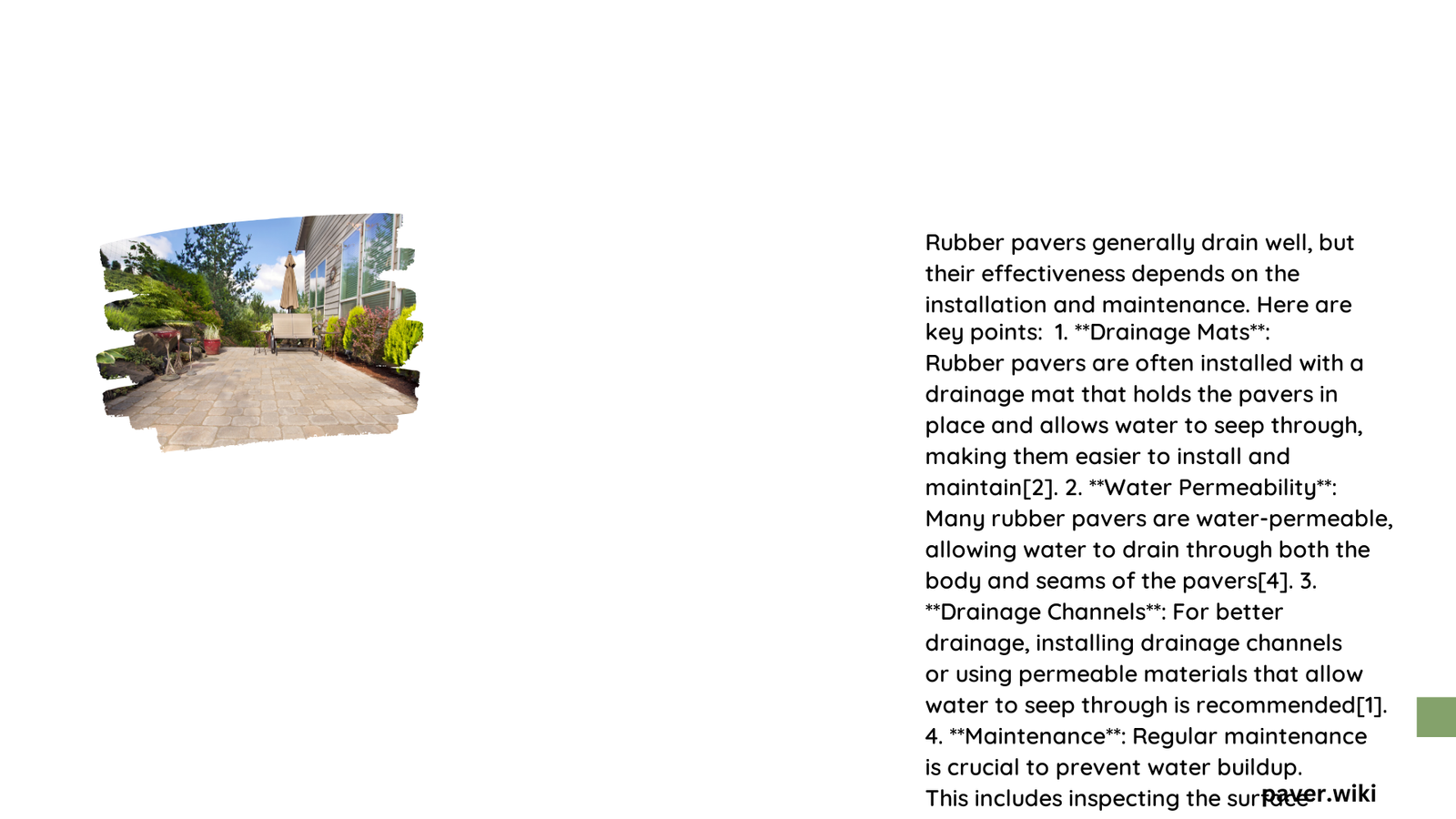Rubber pavers present a unique drainage solution for outdoor spaces, offering distinct water management characteristics that differ from traditional paving materials. Their specialized composition and design enable moderate water infiltration, with performance influenced by installation techniques, base preparation, and environmental factors. Understanding their drainage capabilities requires a nuanced examination of material properties, substrate conditions, and practical implementation strategies.
What Makes Rubber Pavers Unique in Drainage Performance?
Rubber pavers distinguish themselves through several key drainage characteristics:
Water Permeability Factors
- Inherent material porosity
- Manufacturing design
- Installation methodology
- Substrate preparation
Comparative Drainage Metrics
| Drainage Characteristic | Rubber Pavers | Concrete Pavers | Asphalt |
|---|---|---|---|
| Water Infiltration Rate | Moderate | Low | Minimal |
| Surface Permeability | 15-50 in/hr | 0-5 in/hr | 0 in/hr |
| Environmental Adaptability | High | Medium | Low |
How Do Installation Techniques Impact Drainage?

Proper installation significantly influences rubber pavers’ drainage performance. Key considerations include:
- Base Preparation
- Use of crushed stone substrate
- Ensuring proper grading
-
Creating adequate drainage channels
-
Joint Configuration
- Maintaining consistent spacing
- Using permeable joint materials
- Preventing sediment accumulation
What Challenges Affect Rubber Paver Drainage?
Several environmental and structural factors can impact drainage effectiveness:
- Sediment Accumulation: Fine particles can reduce water infiltration
- Compression Over Time: Repeated loading may decrease porosity
- Temperature Variations: Freeze-thaw cycles can alter material structure
Can Rubber Pavers Handle Heavy Rainfall?
Rubber pavers demonstrate moderate performance during intense precipitation events:
- Typical infiltration rates: 15-50 inches per hour
- Recommended maximum slope: 3-5 percent
- Supplemental drainage systems may be necessary for extreme conditions
Maintenance Strategies for Optimal Drainage
To maintain rubber pavers’ drainage capabilities:
- Regular cleaning
- Periodic inspection
- Removing accumulated debris
- Avoiding sand or fine material application
Practical Applications and Recommendations
Rubber pavers work best in:
– Pedestrian walkways
– Playground surfaces
– Light vehicular traffic areas
– Landscaping with moderate water management requirements
Professional Installation Tips
- Consult manufacturer guidelines
- Assess local climate conditions
- Consider professional assessment for complex drainage scenarios
Conclusion
Rubber pavers offer a versatile drainage solution with moderate water management capabilities. Their performance depends on careful installation, ongoing maintenance, and appropriate environmental context.
Limitations and Considerations
- Not suitable for high-water-volume areas
- Requires periodic professional evaluation
- Performance varies by specific product design
Reference:
– EPA Stormwater Management Guidelines
– ASTM Paving Standards
– Rubber Paver Manufacturer Specifications
